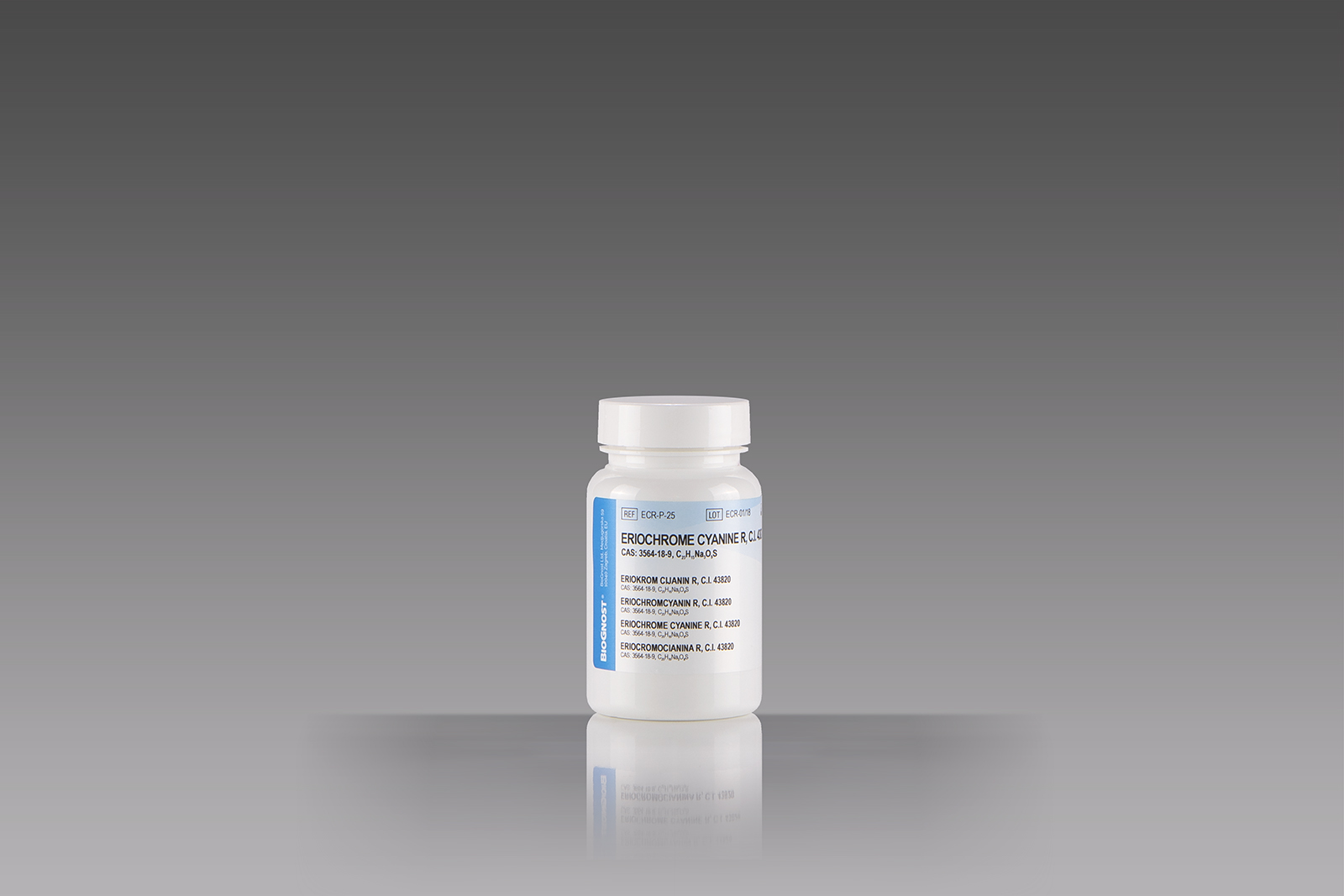Introduction
Histology, cytology and other related scientific disciplines study the microscopic anatomy of tissues and cells. In order to demonstrate a good visualization of tissue and cellular structures, the samples need to be properly stained. Eriochrome Cyanine R (also known as Solochrome Cyanine R) belongs to the group of anionic sulphonaphthalene mordant dyes. It can be used alone as a pH indicator or as a red anionic dye, however, as intense colored complexes are built with transition metal ions (such as iron ions), this dye is most often used as a synthetic replacement for hematoxylin. Namely, Eriochrome and ferric ions make up to four different complexes, two of which are red and two blue. If ferrous solutes of this dye are used under appropriate conditions, selective staining of the nuclei can be obtained similar to the results of progressive staining with hematoxylin. This method is compatible with conventional eosin counterstaining, but also with many other histochemical methods. Eriochrome, therefore, represents a cost-effective and environmentally acceptable synthetic substitute for hematoxylin, and its working solutions show superior stability compared to hematoxylin variants.


